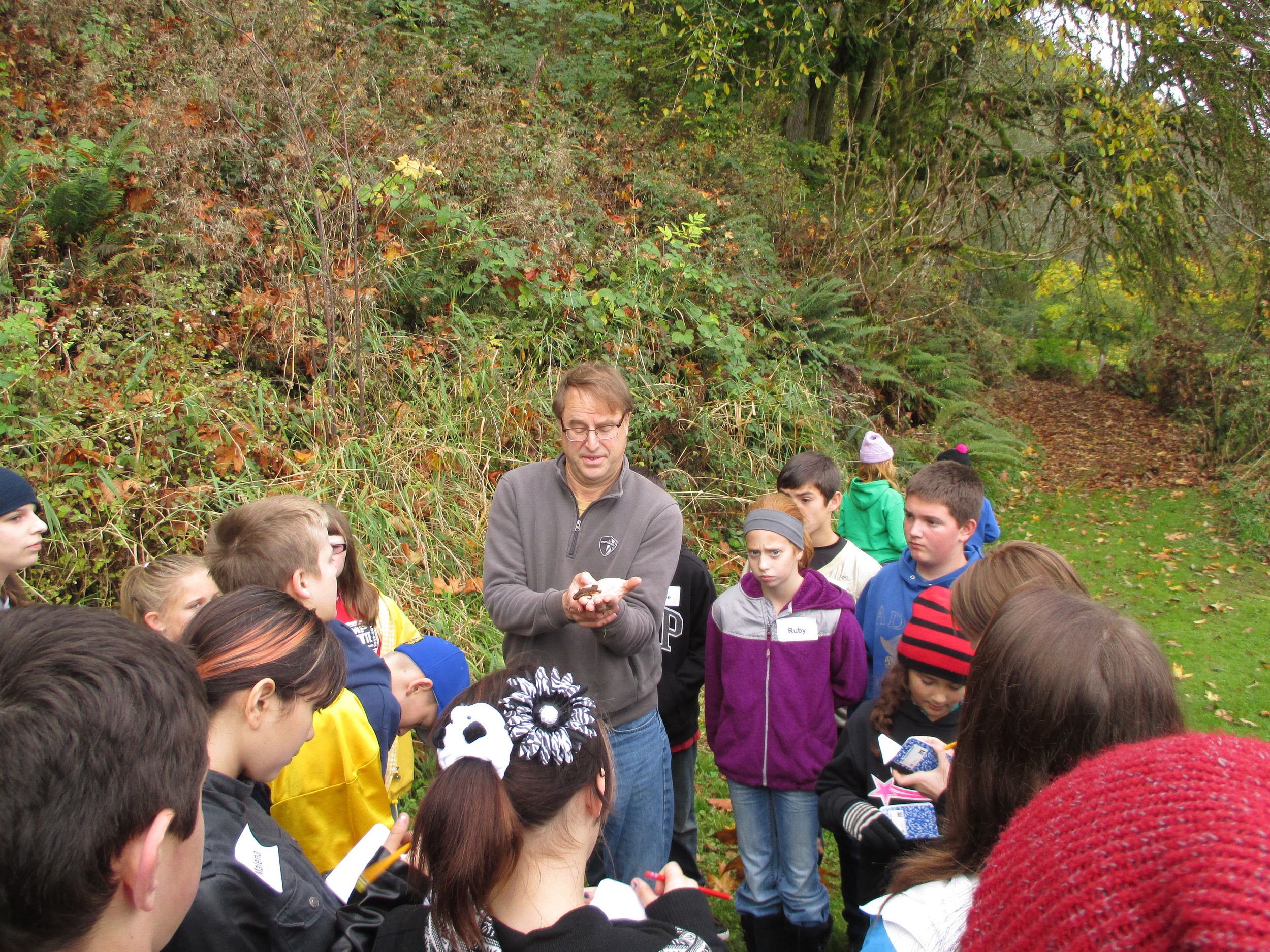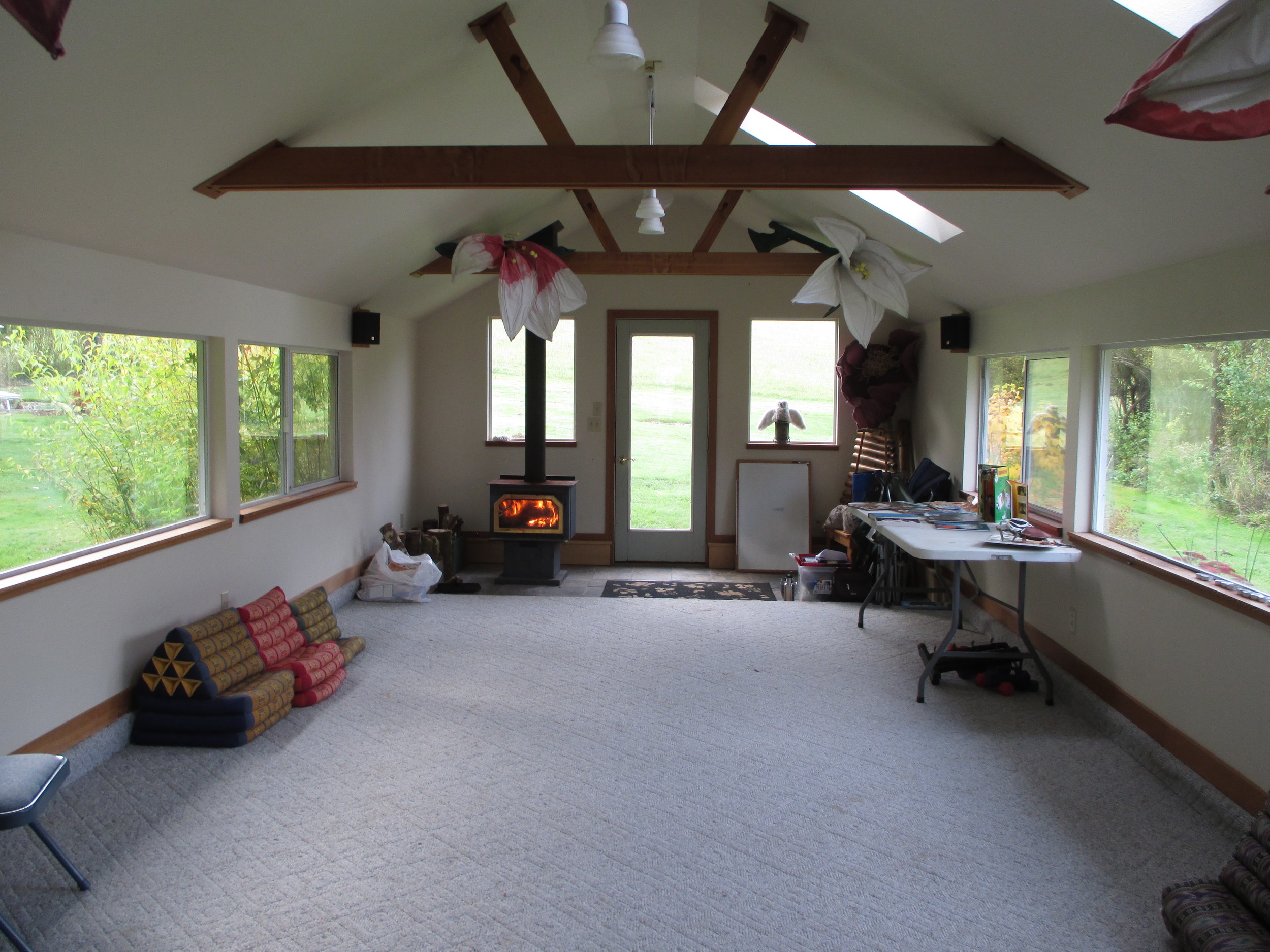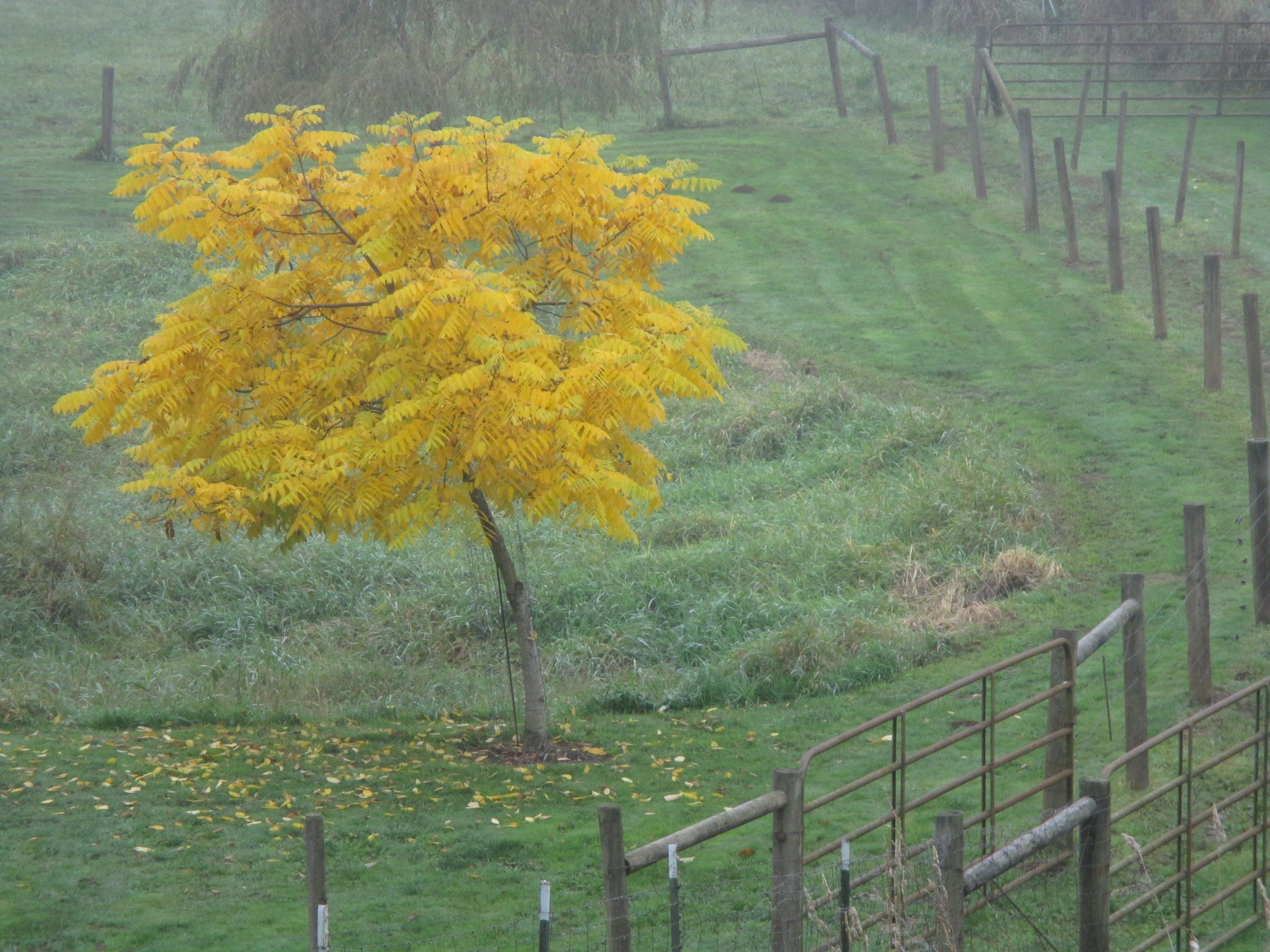This is Wild Thyme Farm in Oakville, Washington, where I spent two beautiful days last week presenting a workshop on writing and nature to teachers and students in the Chehalis River Basin. On this well-kept and thoughtfully managed farm, it was tempting to just let nature speak for itself, to let the stories flow directly from the woods and ponds and trees and vistas.
Which it did all day long. Which it did while farm owner John Erikson (above) took us on a tour of Wild Thyme which he and his two brothers have managed and restored with an eye to optimizing--not maximizing--productivity of the land. What this farm produces is food, timber, habitat, open space, eco-tourism, watershed protection, community, connectivity, and inspiration for visitors. The students here listened intently as John talked about permaculture, sustainability, eco-tourism, and forest management, and the rough-skinned newt he held in his hands.
After our walk, I retreated to this cozy former chicken-coop (below) to offer some ideas on writing about nature to teachers and students. The goal, though not the sole purpose of my workshop, was to encourage the students from schools within the Chehalis River Basin to participate in the River of Words International Poetry and Art Competition.
One of my favorite ways to engage people in the natural world is to get them to slow down and focus. I have two simple tools that seem to work 99.9% of the time to accomplish this. Getting students to focus on something small, something they can fully describe, something that will not overwhelm them requires an old-fashioned 35-mm slide mount.
If you are of the pre-digital-camera era, you will no doubt have a store of these in a spare-bedroom closet or in a shoebox in your attic. I have plenty to go around and am delighted to hand them out to kids who seem eager to use them to find some one thing to look at. For five minutes.
Five whole minutes. And for that major challenge, I use a timer. Any stopwatch or timer will do.
And then you lead your future poet laureates out to sit or perch in a tree or nest to a pond and, when they have found their small thing to focus on and have stopped wiggling, you set the timer and start. And then forever begins. The students have been told to look at their one thing, to think about that thing, to think about how they feel being still and staring, to think about what is happening to them and to the object of their attention over the five minutes. When the timer beeps, everyone gathers to talk about what happened.
I have been using this technique successfully for a few years but am always amazed at how well it works. The stories pour forth.
One student took the assignment quite literally and had wedged a hazelnut that had fallen on the ground into his slide mount. As he contemplated this small scene for five minutes, the student said he starting thinking about the cycle of the nut: on the ground it would take root, produce a shoot, then a tree that would eventually be large enough to bear nuts which would then fall to the ground to begin the cycle again.
Another student had started by focusing on a spider crawling on the bark of a tree. She looked away for just a few second, she said, and the spider wasn't within the frame of the slidemount. "I didn't realize how fast spiders could move," she said.
Several students noticed how, when they were still and focused, they noticed how everything was moving.
One teacher had focused on a beautiful walnut tree (below) whose top few leaves were waving in the gentle breeze. During the five minutes, she said, her eyes would wander but the waving golden leaves would draw her back. Like grandparents, she said. Like grandparents who are so beautiful, aware that they are in the autumn of their lives, and have so much to offer--if only they could get our attention. There they stand--waiting, offering, waving.
Follow these links to Wild Thyme Farm and to the River of Words.









